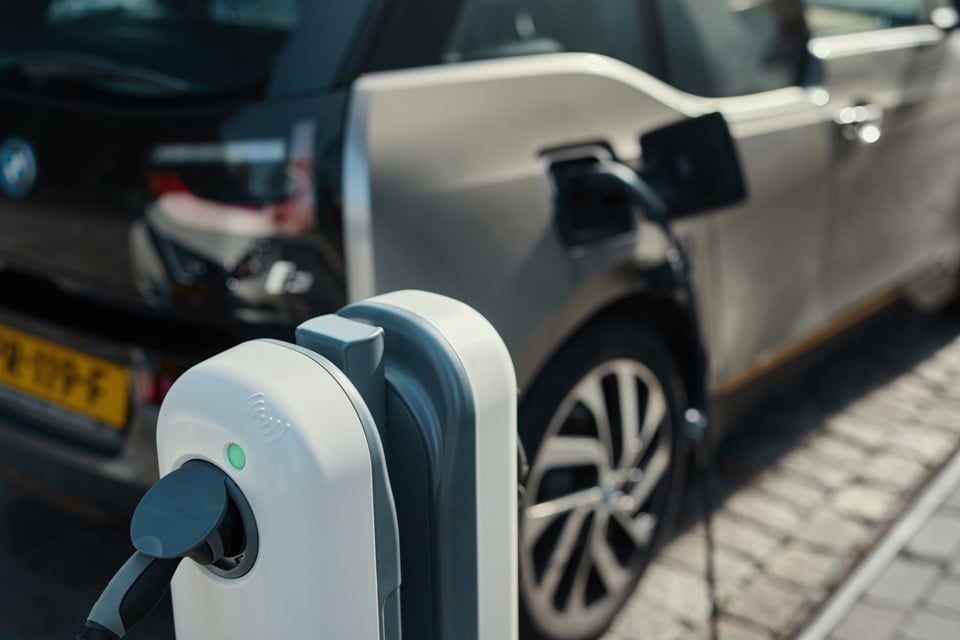A new report on vehicle-to-grid (V2G) technology has found electric vehicle (EV) drivers could save up to £300 a year by storing and sharing electricity in their car’s battery.
However, the research from Good Energy, Honda Motor Europe, The University of Salford and Upside Energy, says the new technology faces significant roadblocks, with fresh policy needed to enable its future.
The study was designed to examine the value of ‘vehicle-to-grid’ (V2G) technology, where an EV is used alongside a special charger and other home systems: battery storage, solar panels, a smart hot water tank, and heat pumps. The technology is designed to maximise efficient energy usage, save money, and cut carbon emissions.
The HAVEN project (Home as a Virtual Energy Network) was a collaboration between the University of Salford, Good Energy, Upside Energy and Honda Motor Europe.
The research took place at Salford’s Energy House — a complete two-storey Victorian terraced house set within an environmental chamber.
Researchers were able to control the weather settings within the facility; making it rain, snow, or shine and vary temperatures between -10C to 30C.
Creating different real-world conditions meant the technology could be tested to see what worked best: at times generating power from solar panels, storing it overnight in an electric vehicle, or exporting the excess to the National Grid.
The EV can also be used to balance how the other systems worked, allowing the house to sometimes reduce the amount of energy it imports from the grid.
The researchers found that the average home could stand to save up to £300 a year while reducing its reliance on fossil fuels by shifting when power is saved or used.
But V2G currently has a number of blockers to reaching its potential. Outlay costs are currently high, with policy incentives required to help bring prices down and enable more households to participate.
The need for scale is also key to making V2G work – batteries in electric vehicles could help absorb excess power and reduce stress on the network.
But this is only efficient in the UK’s current grid system when a significant number of EVs are connected with a localised area, it says.
Enabling larger scale localised connections, such as in car parks with several connected cars, could be an initial route to efficiently sharing power with the National Grid in times of need.
The report concluded that Government has a clear role to support V2G units and make the leap from prototype to a reality. The right level of investment and support could allow the technology to play a major role in the transition to net-zero emissions.
Juliet Davenport, CEO and founder of Good Energy said: “We must take a distributive ‘whole systems’ approach to tackling the climate emergency. That is why vehicle to grid is so exciting — it is the missing link between electrification of transport and decarbonisation of our grid and our homes.
“V2G is where solar power was 10 years ago – the technology exists but it requires innovation, investment and joined up thinking. With the right policy support it could become another clean technology British success story.”
The project provides an insight into how homes can become mini power stations; using modern technology to become energy independent and support a stable, clean energy grid. This different way of imagining how a home uses energy; from a passive consumer to active generator, is key to low-carbon, localised future.
Professor Will Swan, who leads the Applied Buildings and Energy Research Group at the University of Salford’s Energy House, said: “This exciting project has helped us to identify new possibilities for sustainable domestic energy. Our research has shown potential to not only reduce our energy bills, but also relieve pressure on our national energy infrastructure.
"The unique Energy House test facility allowed us to demonstrate how a system like this would cope under various real-life conditions to the scale of a traditional British home.
“With global renewable energy supplies set to double in the next five years, we really believe that this has given us an insight into how our communities could use energy in the future and we now need to understand what these types of systems will mean for consumers.”
Each partner in the project played a different role: Upside Energy led the consortium and was responsible for the overall design of tests as well as operating the assets; and Good Energy designed consumer-centric tests which modelled how each technology would perform in real-life conditions, and supported the operation of assets.
Meanwhile, the University of Salford provided access to its Energy House facility for the duration of the project and research-informed advice on ways to maximise results and insights; and Honda Motor Europe contributed its Power Manager, a V2G-enabled EV charger, development support, and access to the data.
Good Energy powers homes and businesses with 100% renewable electricity from a community of over 1,500 UK generators and owns and operate two wind farms, including the UK’s first commercial wind farm, and six solar farms.
In addition, Good Energy offers a green gas product which contains 6% biomethane — gas produced here in the UK from food waste. To make it completely carbon neutral, emissions from the rest of the gas its customers use is balanced through supporting verified carbon-reduction schemes in Malawi, Vietnam and Nepal.





















Login to comment
Comments
No comments have been made yet.